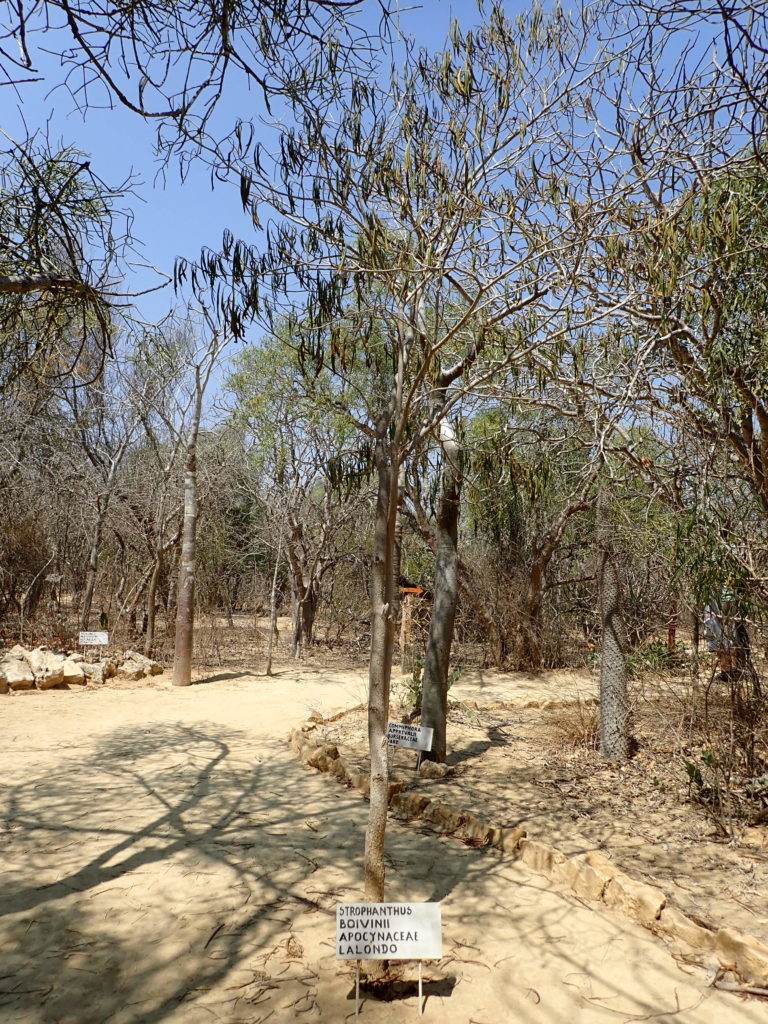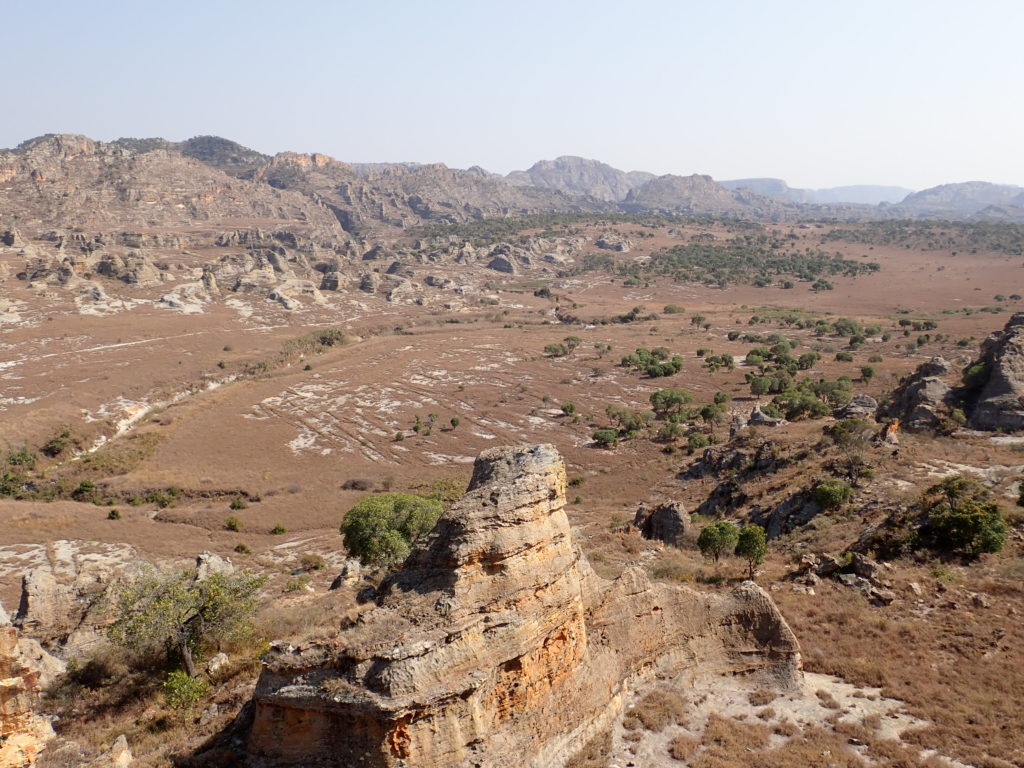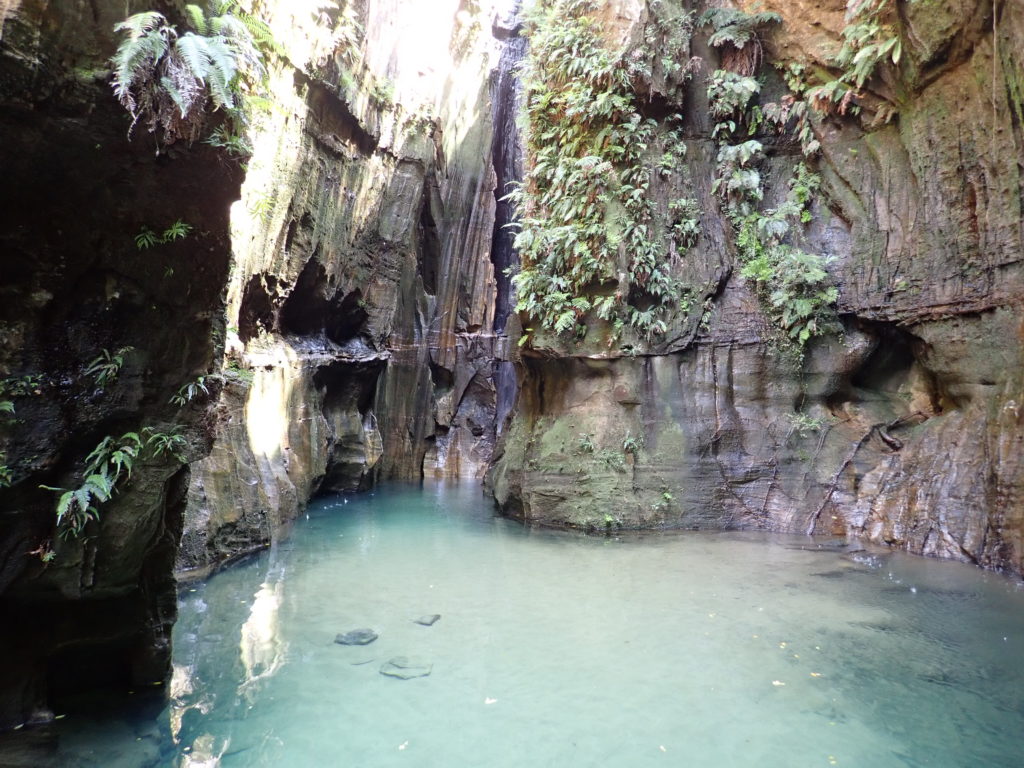Around 160 million years ago, Madagascar was part of the large prehistoric continent Gondwana that consisted of current day Africa, South America, Antarctica and India, among many other landmasses. The eastern part of Gondwana, holding mainly Madagascar and India, first split off from the western part which included Africa. Subsequently Madagascar split off from Antarctica and then finally some 80 million years ago from the Indian subcontinent. It remained an island until today and as a result Madagascar developed into a biodiversity hotspot, with 90% of its wildlife found nowhere else on earth.
This includes the lemurs, descendants of ancient primates that once roamed Africa. Lemurs are known to have developed in Africa while it was already separated from Madagascar and the best accepted theory for their existence in Madagascar is that they accidentally crossed the Mozambique channel on rafts of vegetation. To allow for the evolutionary diversity, this must have happened a number of times over a period of millions of years.
Then around twenty million years ago, continental plates shifted and with it the ocean currents, rendering such rafting trips impossible. While in Africa lemurs started to compete with monkeys which evolved much later and had many advantages over lemurs and other primates, the lemurs of Madagascar had no such problems and developed into many different species, filling different evolutionary niches.
When the first (Asian) humans arrived in Madagascar about 2000 years ago, the country held well over a hundred different lemur species, some of which have now unfortunately gone extinct.
We had already seen various lemur species in Isalo and Ranomafana. Being ahead of schedule as a result of skipping the train ride to Manakara and boat ride over the Canal de Pagalanes, we decided to add another park to our itinerary. We agreed on Kirindy National Forest, close to the city of Morondova that was already on our list of destinations. Not only does Kirindy hold eleven different species of lemur but it is also the best place to see the fossa, Madagascar’s largest predator and family of the mongoose.
We arrived in Kirindy late afternoon after a fifty kilometre drive from Morondava, where we had spent the morning on the beach, and we immediately booked the night walk. This was a slightly disappointing experience as we were slow-going, paired with people that seemed unhappy with any type of adventure and formed too large a group in the dark. We only saw a limited number of animals and decided to start the morning hike particularly early the next day at 7am.
The experience the following morning was a complete reversal of the night before. Already at the start of our walk we encountered the fossa, a remarkable animal with a very long tail which helps it hunt the trees for lemurs. This fossa had discovered a waste dump while searching for food and we were able to get very close until our guide became nervous and pulled us away. Fearful of having to go through a rabies treatment if we dwindled any longer, we complied.
There are a lot of fun facts on the fossa and you can find more information on Wikipedia.
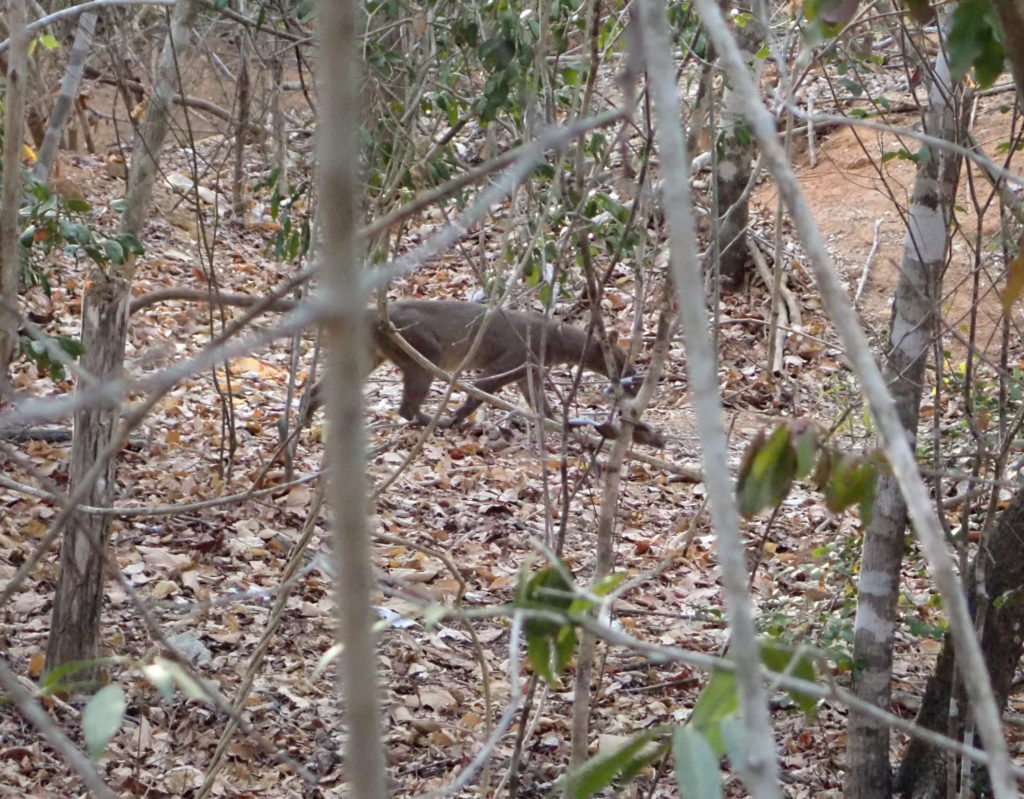
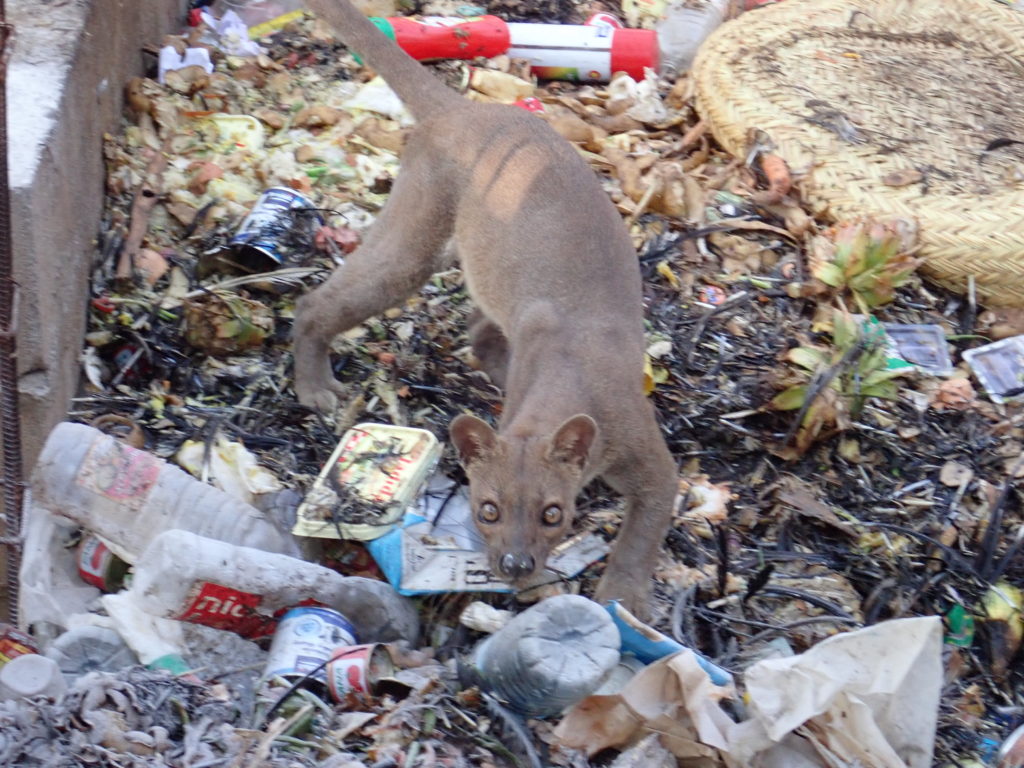
After leaving the fossa behind, we kept running into groups of maki (a type of lemur moving on four legs) and sifaka (using only two, making it seem like a dance), passing us by with their young at short distance as long as we remained fairly still. Others were jumping from tree to tree, remaining in view as long as we did not annoy them too much.
All of this and the occasional chameleon made Kirindy by far the best place we visited to see Madagascar’s wildlife.
